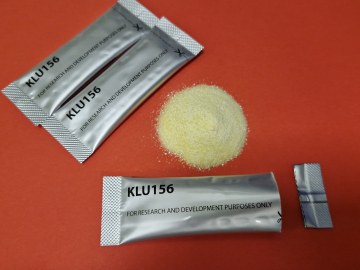Coronaviruses: What You Need to Know
A coronavirus outbreak that emerged in Wuhan, China in December 2019 has snowballed into the COVID-19 pandemic. Now, the virus that causes the disease has infected nearly 2.6 million people around the world–killing more than 178,800 people as of April 22, 2020.
This FAQ provides the basics of coronaviruses and COVID-19, how it is transmitted, and how you can protect yourself.
What is a coronavirus?
Coronaviruses are a family of viruses that typically cause mild respiratory infections like the common cold but also more severe (and potentially deadly) infections. They are zoonotic diseases, meaning they are transmitted between animals and people.
What severe diseases are caused by coronaviruses?
A coronavirus that originated in China led to the Severe Acute Respiratory Syndrome outbreak in 2003. Another coronavirus emerged in 2012 in Saudia Arabia causing Middle East Respiratory Syndrome. And now, we have COVID-19, caused by a novel coronavirus named SARS-CoV-2 that emerged in late 2019.
What symptoms do coronaviruses typically cause? How severe are the symptoms in the current outbreak?
Common signs of infection include runny nose, cough, fever, sore throat and shortness of breath. In more severe cases, infection can cause pneumonia, severe acute respiratory syndrome, kidney failure and even death. The most common symptoms reported with COVID-19 are fever, fatigue, and a dry cough. Some people also report body aches, congestion, runny nose, sore throat or diarrhea, according to the WHO–and about 1 in 6 become seriously ill and have difficulty breathing.
Why is it called a coronavirus?
Coronaviruses are named after the Latin word corona, meaning “crown” or “halo,” because they have “crown-like spikes on their surface,” according to the US Centers for Disease Control.
How are coronaviruses transmitted between people?
Coronaviruses are typically transmitted from person to person through respiratory droplets and close contact. With SARS-CoV-2, the majority of the transmission is happening through respiratory droplets that we may inhale from close contact with one another.
Can people spread SARS-CoV-2 even when they are asymptomatic?
The incubation period for COVID-19 is most commonly around 5 days, but can range from about 1-14 days, according to the WHO. People infected with SARS-CoV-2 can spread the virus before they show symptoms, or when they have only mild symptoms—and some people never develop symptoms—so it is important for people to follow guidelines on social distancing and risk-reducing behavior even if they feel fine.
How can I protect myself against coronaviruses?
Risk-reducing behaviors are the most important priority. The WHO suggests that you avoid close contact with anyone showing symptoms of respiratory illness such as coughing and sneezing; cover your mouth and nose when coughing and sneezing; practice regular hand washing; and avoid touching your eyes, nose, and mouth.
Should I wear a mask for protection?
Many countries have advised their citizens to wear masks. The US CDC recommends that, unless you’re treating a patient, you wear a homemade face cover when you go out in public. There are shortages of medical-grade masks, so they must be saved for health workers who need them desperately.
What treatments are there for coronaviruses?
Currently, there are no licensed vaccines or therapeutic agents for coronavirus prevention or treatment though research studies into potential antivirals and vaccine candidates are underway in a number of countries. Vaccine testing, development, and distribution is typically a much longer process than drug development, and it is not likely that a vaccine for COVID-19 will be ready before 2021 at the earliest.
How long will social distancing be necessary?
The COVID-19 pandemic will last at some level of intensity until most people develop immunity—either through vaccination or recovering after falling sick. Otherwise, the disease will return when social distancing measures are lifted. However, the hope is that even before a vaccine is available, there will gradually be fewer susceptible hosts, more access to testing, and better interventions that will enable some partial roll back of social distancing. Until those factors are in place, some degree of social distancing is the best hope, in many places, to slow the spread of disease and prevent sick people from overwhelming hospitals with limited beds, workers, and equipment.
Should I avoid travel to places affected by the outbreak?
The US Department of State has issued its highest possible travel warning, advising all US citizens to shelter in place or return home. The Department of Homeland Security issued a Notice of Arrival Restrictions requiring American citizens, legal permanent residents, and their immediate families who are returning home to the US to travel through one of 13 airports upon arrival into the country. The latest updates can be found on the CDC website.
On March 16 the EU issued a 30-day ban on non-essential travel to at least 26 European countries—and that may be extended.
Many states have advised residents against non-essential travel within their state or to other states.
Is there a known animal vector for the current outbreak?
Genetic and epidemiological evidence suggest that the novel coronavirus came from bats in China and may have first emerged from a large seafood and animal market in Wuhan, China.
Stay informed:
- Find the most recent Global Health NOW coverage of the coronavirus outbreak here.
- For quick insights on key issues related to the outbreak from some of the world’s most respected global health experts, visit GHN's COVID-19 Expert Reality Check resource.
- The Center for Health Security at the Johns Hopkins Bloomberg School of Public Health is publishing daily situation reports here.
- For up-to-date counts on cases around the world and additional data points, visit the Johns Hopkins Coronavirus Resource Center Tracker.
Sources:
CDC 2019 Novel Coronavirus, Wuhan, China, Situation Summary
COVID-19: Infection Control in Your Home – Johns Hopkins Bloomberg School of Public Health
COVID-19 Questions Answered: IVAC-Affiliated Experts Give Their Take on the Challenges with
GHN’s COVID-19 Expert Reality Checks
Join the tens of thousands of subscribers who rely on Global Health NOW summaries and exclusive articles for the latest public health news. Sign up for our free weekday enewsletter, and please share the link with friends and colleagues: https://www.globalhealthnow.org/subscribe
An Indonesian health official holds a thermal gun used to check the body temperature of passengers at the Juanda International airport in Sidoarjo, East Java on January 30, 2020. Image: Juni Kriswanto/AFP/Getty




